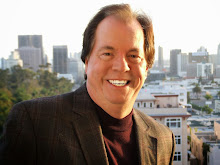by Tom Hinton
An interesting thing happened this past week. On Tuesday evening, February 26, all across
While a handful of loyal Starbucks customers were locked out because they didn’t get the store closing message, most customers accepted this unusual occurrence and simply skipped their evening Java fix or found another place to hang-out with their laptop, book, or newspaper.
Since Tuesday night, a growing number of people have contacted me as “
To borrow an adage from my parent’s generation, it seems that “what’s good for Starbucks is good for
Things got so bad for Starbucks that Howard Schultz, who had relinquished his title of CEO eight years ago in order to focus on the company’s customer experience and other life pursuits, reclaimed his CEO title on January 8, 2008. Schultz, who first joined Starbucks in 1982, is responsible for building Starbucks from a fledging coffee bean retail operation into the most prolific and successful retail coffee business in the world. Most Starbucks aficionados are not aware that Schultz left Starbucks in 1985 when his idea to establish Italian expresso bars in the
According to Wikipedia and Starbucks’ website, two years later, Starbucks’ management decided to sell its Starbucks. Schultz bought it and renamed Il Giornale to “Starbucks” and aggressively expanded the company’s reach across the
For 20 years, Schultz has done a brilliant job of building the Starbucks brand and expanding its reach around the world. He has given good jobs to more than 170,000 partners (employees), kept commercial real estate agents busy with the opening of more than 8,500 company-owed outlets worldwide plus 6,500 joint-venture and licensed outlets that employ nearly 70,000 adjunct personnel.
It’s fair to say that Howard Schultz has single-handedly created a cult-like following among millions of people who had previously only tasted freeze-dried coffee. There is no question that Schultz ranks among the best leaders in corporate
I think the answer is a combination of three key factors:
First, there’s no question that economic pressures and the cost of making Starbucks coffee have taken their toll on the company’s profits and operating methods. This partially explains why Starbucks is slowing its growth and retrenching its efforts to focus on the basics of quality and superior customer service.
Secondly, given Schultz’s brilliant leadership and thorough understanding of the intricacies of the coffee bar retail business, his absence from the post of CEO created a Visionary vacuum inside the company. In turn, I think a “bean counter mentality” crept into operational decisions without taking into consideration two important factors: Culture and Customer Needs and Wants. Unfortunately, many of these internal changes at Starbucks were not well-received by customers who voted with their feet and tried the competition.
Thirdly, Starbucks got sloppy in terms of customer satisfaction, listening skills, and honoring its core values. While executives were busy crowding new products onto already-cramped retail floor space, and experimenting with things like books and CDs (which were positively received), store managers got distracted and seemed to be spending more time erecting marketing displays and banners instead of paying attention to their customers.
This misstep allowed Dunkin Donuts, McDonalds, and other aggressive local competitors to nip away at the once-loyal Starbuck customer base. Given the choice to pay $2.75 for a latte at Starbucks or 99 cents at Dunkin Donuts, many customers were seduced into trying a competitor’s brand. And, once a customer leaves, it’s very difficult to win them back.
So, fast forward to last Tuesday night’s “Art of Espresso” three-hour training when Howard Schultz took the stage and pronounced to his loyal and faithful partners, “Tonight, we will begin to elevate the Starbucks Experience for our customers. We are passionate about our coffee. And we will revisit our standards of quality that are the foundation for the trust that our customers have in our coffee and in all of us. But, as I think about it, there is another -- perhaps equally important -- reason why we have scheduled this training. It’s to celebrate who we are.”
After three hours of motivation, training, and re-affirming the Values and Quality Standards that have made Starbucks a great American success story, Schultz reminded everyone that, “We are Starbucks. We should be incredibly proud of what we have built. We are the worldwide leader of specialty coffee. And, believe me when I tell you, we are just getting started. We will overcome the difficult and humbling challenges we face, and will be stronger for it. You have my word on that.”
I have no doubt that given Starbuck’s recommitment to excellence and the reappearance of Howard Schultz as CEO that Starbucks will rebound stronger and healthier than before. But, he’s right. Sometimes it takes a “difficult and humbling challenge” (like dissatisfied customers and unfocused employees) to kick you in the head before you “get it!”
Now, if you’ll excuse me, I’m off to my local Starbucks to see if my favorite Barista is honoring Starbuck’s newest customer pledge: “Your drink should be perfect every time. If not, let us know and we’ll make it right!”
While I’m there, I might suggest Starbucks strengthen that pledge to read: “Your drink will be perfect because instead of chatting with other employees about why I hate my boyfriend, I’ll be listening very carefully to you as I take your order. And, I’ll repeat your order while using your first name to make sure that the Barista hears it correctly, too!”
Oh yeah, have a nice day!

No comments:
Post a Comment